These are the last remaining US battleships, now serving as floating museums after modern warfare made them obsolete
Touting large-caliber guns and torpedos, battleships carried intense firepower and heavy armor.
With the advancement of military technology, the need for battleships dwindled.
There are only eight US battleships still afloat, now converted into museum ships.
Having large, heavily armored warships was a tactical advantage in the 20th Century.
But as military technology and weaponry advanced, battleships became obsolete. Battleships were the apex of power in the era when gun battles dominated naval fights, and they still proved useful for decades in firing retrofitted missiles and hammering enemy coasts with guns. Each 16-inch gun could fire a round that weighed around 2,000 pounds.
Less than a dozen battleships are still afloat in the world — eight of which once belonged to the US Navy — now serving as museum ships honoring the historic battles they served in.
USS New Jersey
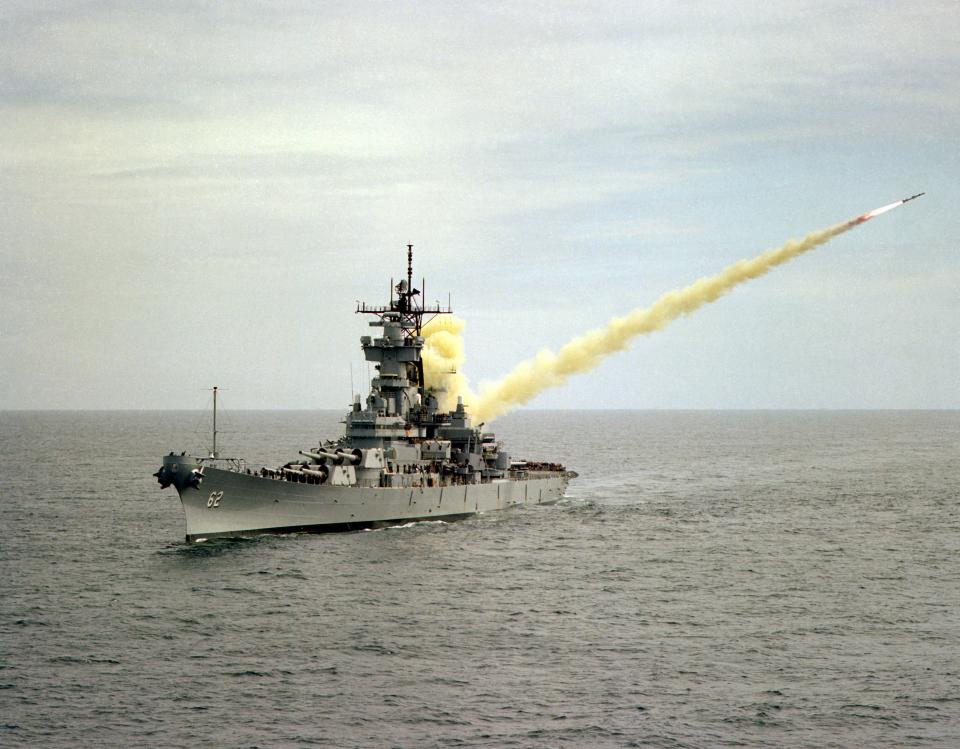
First launched in December 1942, USS New Jersey, an Iowa-class battleship, earned more battle stars than any other US battleship in history.
Nicknamed "Big J," the New Jersey served in World War II, the Korean War, and the Vietnam War, during which it was the only battleship to be reactivated.
The warship was decommissioned for the last time in 1991, entering the reserve fleet while the details of converting it into a museum ship were being ironed out. In 1999, Congress allowed Big J, under the management of nonprofit Home Port Alliance, to be turned into a museum ship.
Since 2000, Big J has been moored across the channel from USS Olympia, but the museum ship is back on the move for the first time in decades.
On March 20, the New Jersey was moved from its dock in Camden, New Jersey, heading for the Philadelphia Navy Yard for maintenance work.
USS Texas
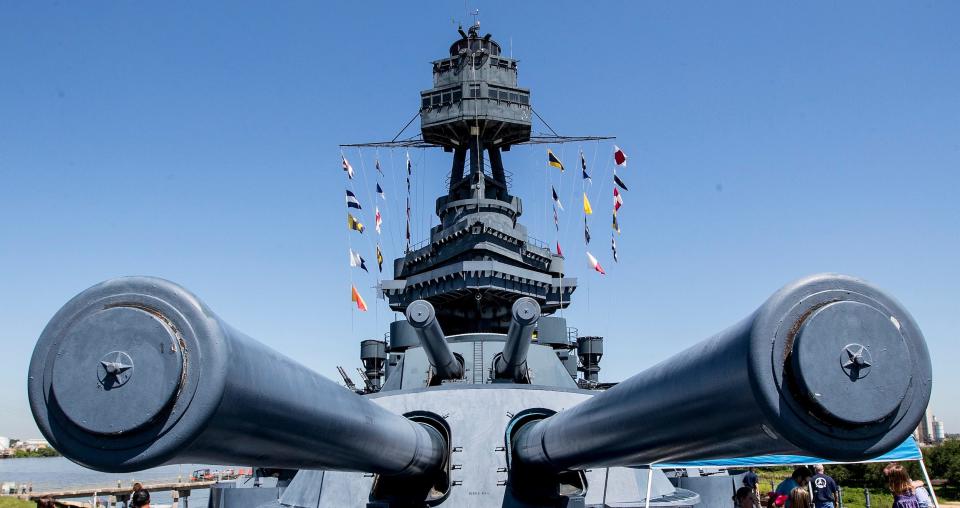
First launched in May 1912, USS Texas was the oldest battleship afloat in the United States and the last surviving dreadnought in the world.
The New York-class battleship served in both World Wars, undergoing a major overhaul during the interwar period. It was fitted with 14-inch guns and could strike targets up to 13 miles away.
The Texas was decommissioned in 1947 and became the first permanent museum battleship in the US, owned by the people of Texas and administered by the Texas Parks and Wildlife Department. In August 2022, the ship was towed to Gulf Copper Dry Dock and Rig Repair in Galveston, Texas, to undergo extensive repairs costing more than $20 million.
Earlier this month, the museum ship moved from the dry dock to a nearby wet berth, but more work on the ship's topside is still underway. The ship is set to reopen to the public by the end of next year, the Battleship Texas Foundation said.
USS Massachusetts
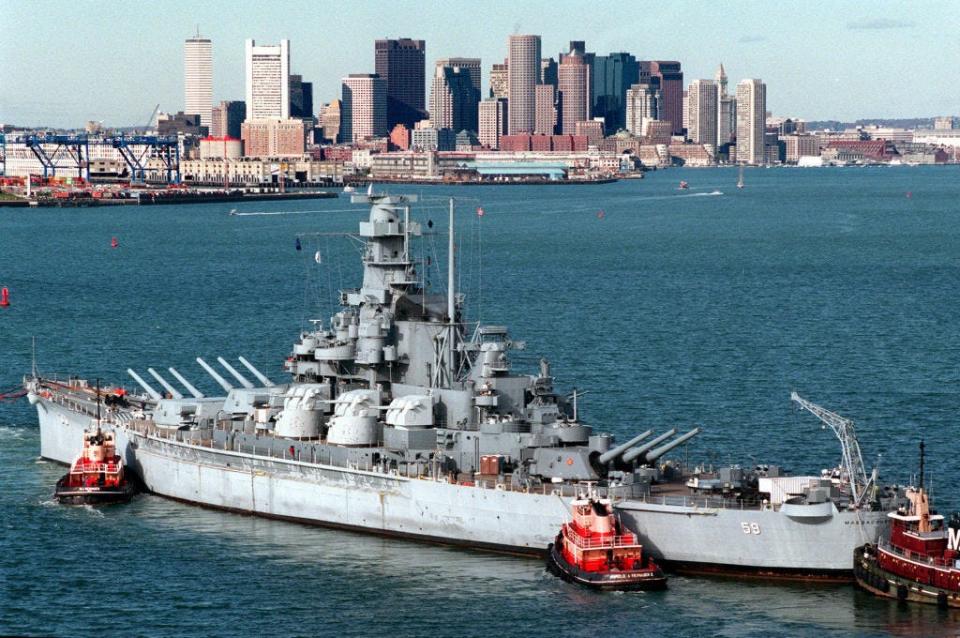
The sixth ship to bear the name of the state, USS Massachusetts was known for firing the first and last 16-inch shells of World War II. At 680 feet long, the warship was powered by four steam turbines, giving it a top speed of nearly 28 knots, and could carry three Kingfisher floatplanes.
First launched in September 1941, the South Dakota-class battleship, affectionately dubbed "Big Mamie" by its crew, was armed with nine 16-inch 45-caliber guns, 20 5-inch, 38-caliber dual-purpose guns, and an antiaircraft battery of Bofors guns and Oerlikon autocannon.
The Massachusetts made one of the longest-range gunfire hits against a moving enemy target at a range of 28,000 yards. During the Battle of Casablanca, Big Mamie fired at the French destroyer Milan serving with the naval forces of Vichy — the government that collaborated with Nazi Germany after France's fall — which was fighting to defend French territory near north Africa.
The ship was decommissioned in 1947 and stripped of 5,000 tons of equipment to be used for other naval vessels. At the request of Massachusetts citizens, Big Mamie was donated to the state in 1965 instead of heading to a scrapyard.
Located in Battleship Cove in Fall River, Massachusetts, the warship is considered the most unaltered battleship in the world.
USS Alabama
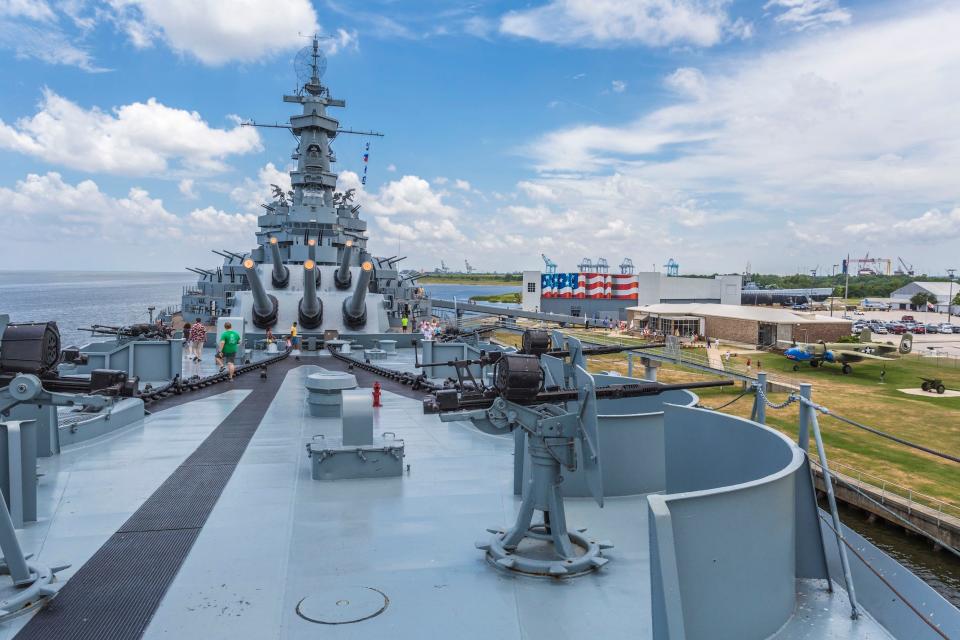
USS Alabama, a South Dakota-class battleship, was launched in 1942 after the US entered World War II. At the height of WWII, the 680-foot warship had a crew of 2,500 members and was the only American ship to be honored by the Soviet Union.
The Alabama's active service was short-lived after the US Navy found it had a surplus of ships following the end of the war, and it entered the Navy's reserve fleet just five years after launching.
Twenty years later, the vessel was struck from the roster in 1962 and destined for the scrapyard until Alabama residents began a campaign to save the ship. The battleship was awarded to the state and preserved by the nonprofit organization, the USS Alabama Battleship Foundation. The ship is permanently moored in Battleship Memorial Park in Mobile, Alabama.
USS Wisconsin
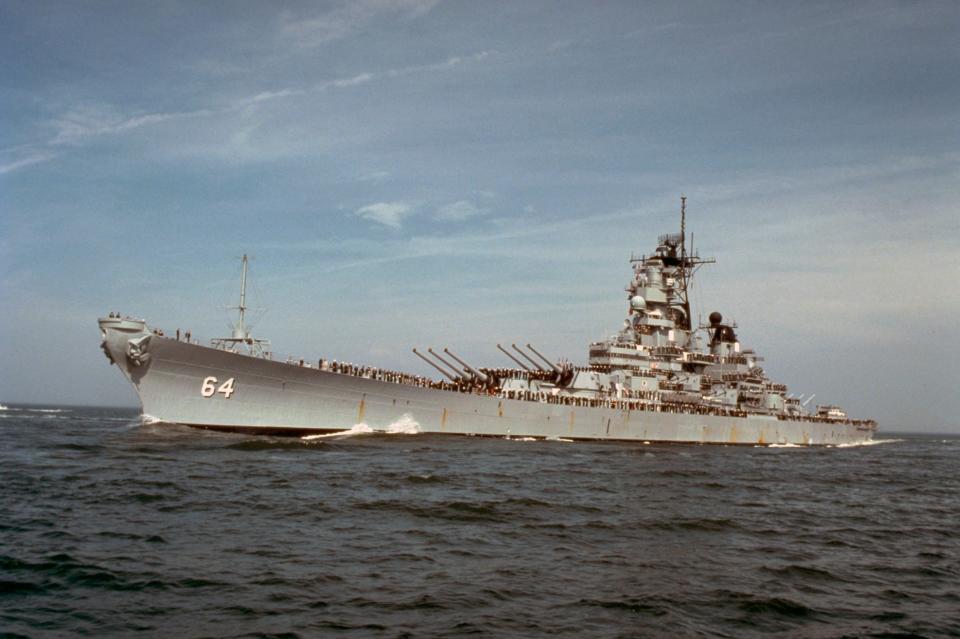
USS Wisconsin, an Iowa-class battleship, was the second-to-last battleship built by the US and the last battleship to ever fire in combat.
Called "the Wisky" by its crew, the warship served in the Pacific during World War II, later spending a year as a training ship after Japan formally surrendered. It was one of the first ships to be reactivated for the Korean War.
In 1958, the Wisky reentered the reserves for three decades before being recommissioned to participate in the Persian Gulf War. As part of Reagan's naval initiative, the ship was refitted with Tomahawk cruise missiles and drone-based technology.
It was officially decommissioned in 1991 but was chosen to remain battle-ready for emergency situations. In 2006, the Wisky was determined to be too old to modernize and is now permanently moored as a museum battleship in Norfolk, Virginia, which officially owns the vessel since 2010.
USS Missouri
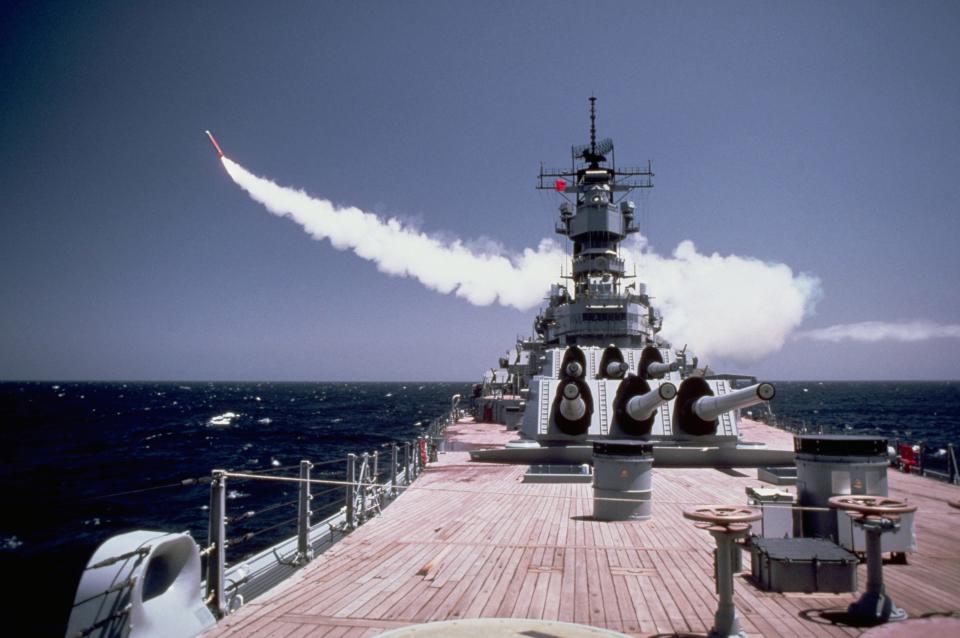
Commissioned in 1944, USS Missouri, nicknamed "Mighty Mo," was the last — and the largest — battleship built for the US Navy.
Might Mo survived the downsizing of the Navy's fleet in the late 1940s, remaining in active service as the only commissioned battleship from 1947 to 1950 at the order of President Harry S. Truman.
In 1955, the Missouri entered the "mothball fleet" and was moored in the naval yard in Bremerton, Washington, open to the public until being reactivated with the rest of the Iowa class in the 1980s.
It was finally decommissioned in 1992 and donated to the USS Missouri Memorial Association. The ship was towed to Pearl Harbor in 1998, moored less than 500 yards behind the sunken battleship, USS Arizona.
USS North Carolina
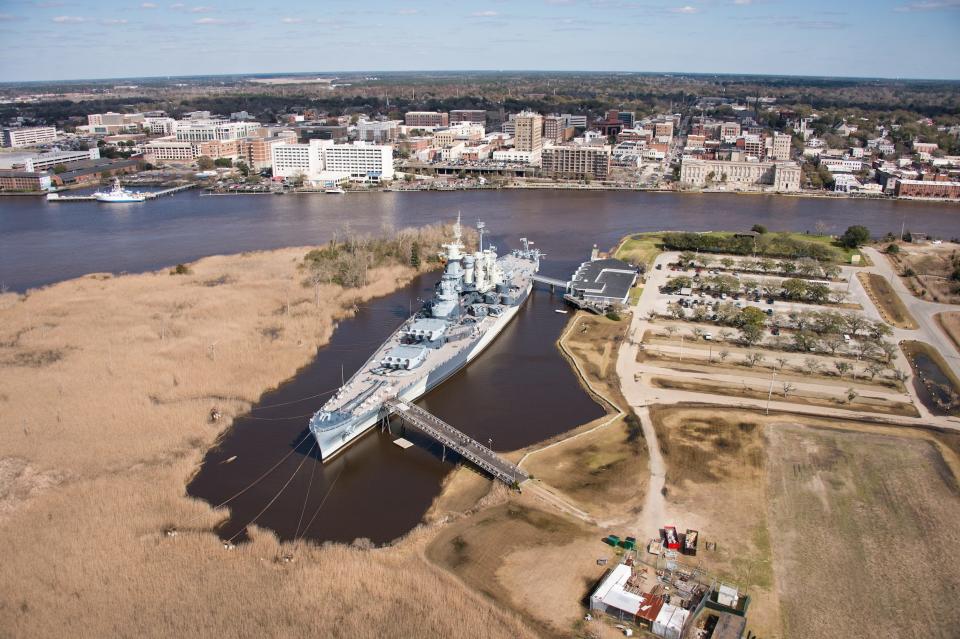
The lead ship in its class, USS North Carolina was the first battleship built by the US in nearly two decades — and one of the last battleships ever created.
First launching on June 13, 1940, it was the newest battleship in the US Navy by the time the US entered World War II. The ship measured 728 feet. Its sleek design at the time gave the North Carolina an edge over dreadnought-era warships, making it faster and more maneuverable, reaching speeds of 28 knots.
The North Carolina was fitted with 29 large-caliber guns and several 40 mm and 20 mm antiaircraft guns.
In the 1960s, the ship was placed on the chopping block after the Navy decided only to keep Iowa-class ships in its fleet. The North Carolina was donated to the state and towed to its final resting spot on the Cape Fear River in Wilmington, North Carolina, where it remains open to the public.
USS Iowa
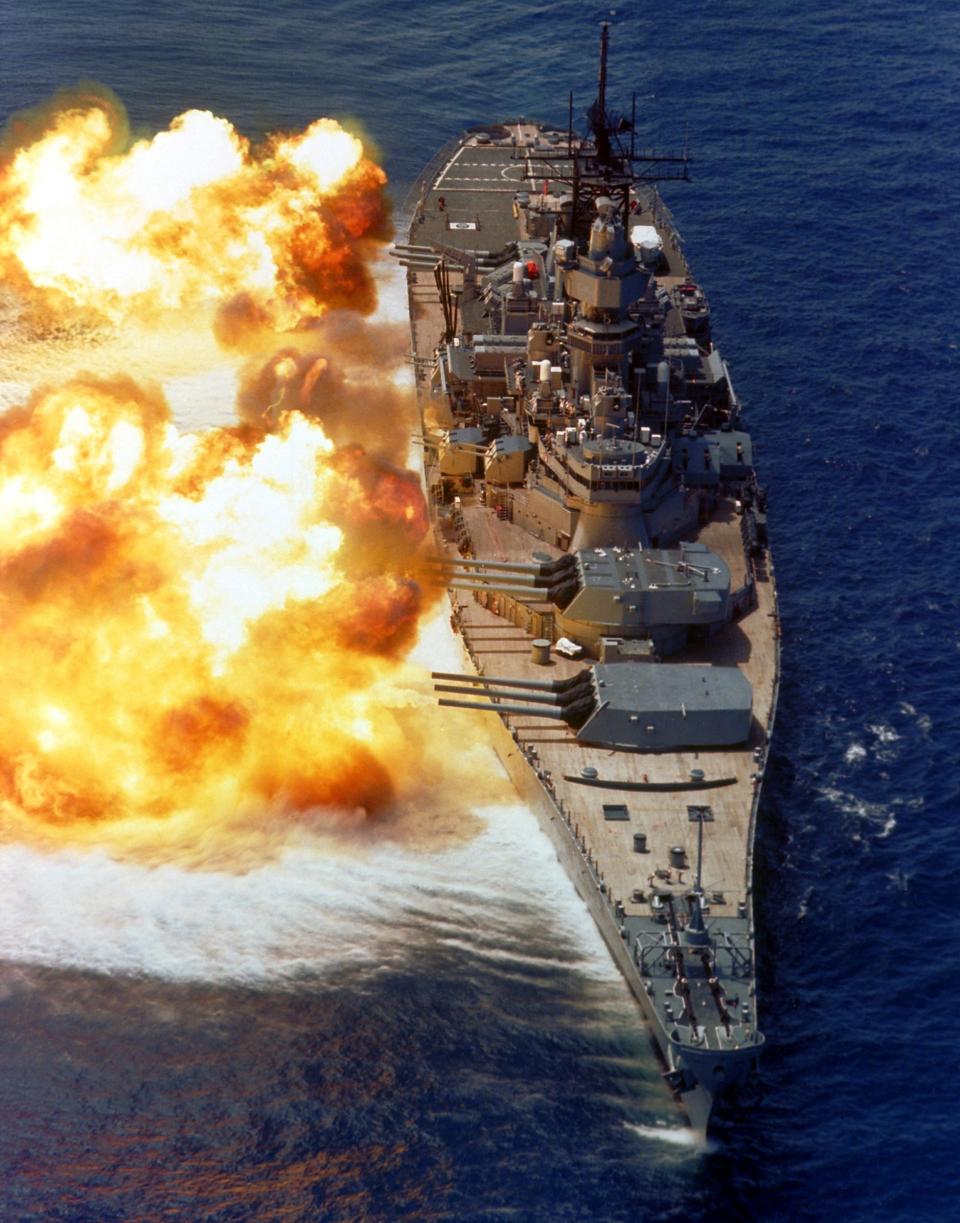
USS Iowa, the lead ship in its class, was the last battleship to leave the US Navy. First launched in 1943, the 887-foot battleship was one of four battleships built by the US and was the longest-serving battleship in the Navy's history.
After World War II, the Iowa was briefly decommissioned and added to the reserve fleet before being reactivated during the Korean War. Following the end of the war, the ship reentered the reserves for 24 years.
In the 1980s, the ship was selected for an extensive refitting under President Ronald Reagan's Naval Expansion Initiative. The vessel's antiaircraft guns and secondary batteries were removed and refitted with ballistic missiles.
But in 1989, a massive explosion occurred inside one of the Iowa's turrets, killing 47 crewmen and severely damaging the ship. The blast led to its final decommissioning in 1990.
The ship was officially struck from the roster in 2006, remaining in cold layup until it was donated as a museum ship in 2011. The Iowa left the Navy in 2012. Now operated by the nonprofit, Pacific Battleship Center, the vessel is permanently moored at the Port of Los Angeles in San Pedro, California.
Read the original article on Business Insider

